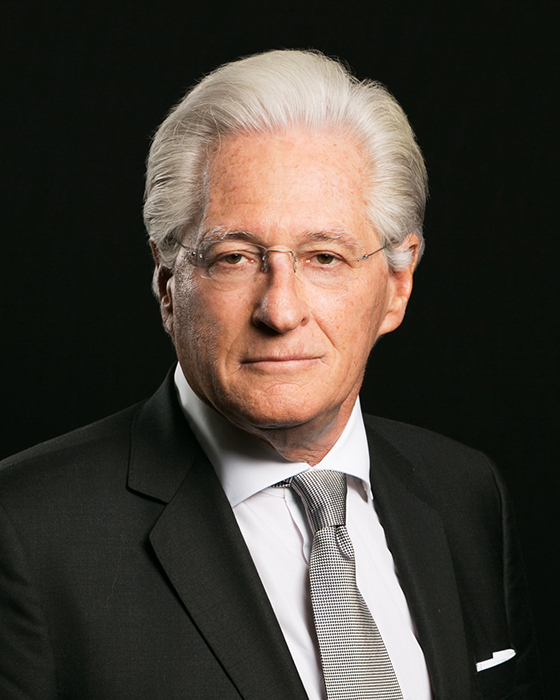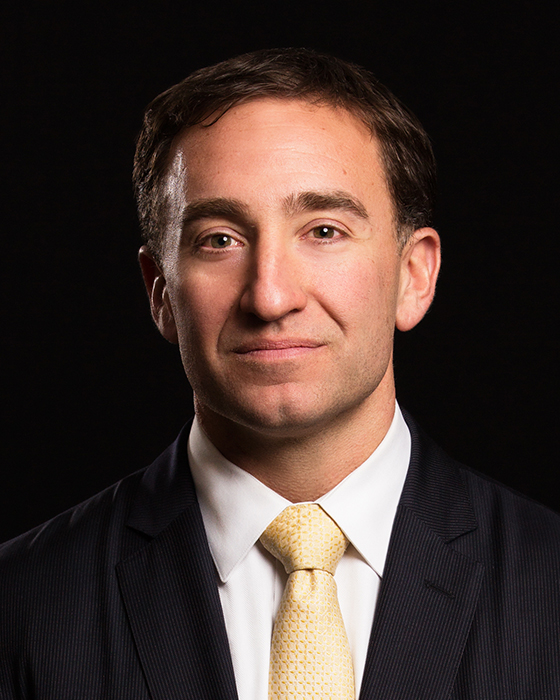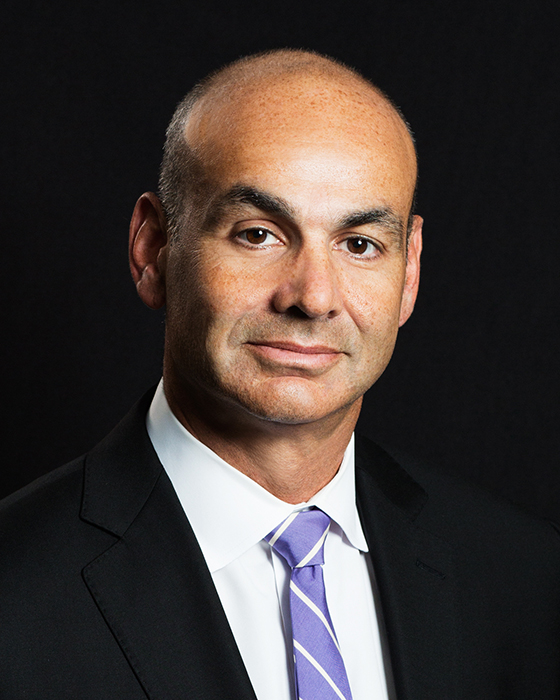When investors need tenacious litigators bold enough to step into the ring and go toe to toe – and win – against some of the world’s most powerful financial institutions, they turn to the hard-hitting attorneys at Kasowitz Benson Torres. For the financial services and structured finance litigation teams at Kasowitz, the disputes are challenging in the best way, bringing justice to parties that have been wronged in connection with highly complex and esoteric financial product disputes, while taking to task some of the world’s largest banks and financial institutions.
Firm founder Marc Kasowitz works closely with partners Michael Hanin and Sheron Korpus in developing cutting-edge strategy and attacking the most egregious areas of the law that favor large bank defendants, reshaping securities law to better protect investors. All three are members of the prestigious Lawdragon 500 Leading Plaintiff Financial Lawyers.
These attorneys excel in the complex and thorny arena of financial fraud, regularly going up against some of the largest, most sophisticated legal teams in the country representing the nation’s largest banks. And time and again, they prove their mettle, bringing an unparalleled level of representation for defrauded investors.
Kasowitz led a team that dug in for a full decade in a RMBS put-back case against Credit Suisse, resulting in $600M for the defrauded bond insurer, in a case that spoke directly to the issues at the heart of the Great Recession: Were these loans inherently risky? Or were the bond insurers deceived about the nature of the poorly packaged loans?
Hanin is representing several funds holding $2B in notes issued by the National Collegiate Student Loan Trusts, which suffered major losses coming out of 2008. He recently secured a closely-watched decision in Delaware that asserted the fiduciary duties owed to the funds.
Korpus, through his securities work for hedge funds and other institutional investors, effectively overturned the old assumption that the big banks’ contracts prevent any claims about common law fraud or breach of fiduciary duty being brought, making new law that enables greater recourse for defrauded investors.
As the Warren Buffet wisdom goes, attorneys at Kasowitz Benson Torres caught the naked swimmers as the tide went out following the 2008 credit crisis. Now, over a year into the Covid-19 pandemic that roiled the markets, this elite corps of financial services litigators stands poised to tackle the next round of wrong-doers.

Lawdragon: Your recent trial win for MBIA is a stunning achievement after 10 years of litigation. What challenges did you face along the way, going up against a mammoth bank like Credit Suisse?
Marc Kasowitz: Not only did we face the challenge of proving that Credit Suisse misrepresented the nature of thousands of loans comprising the structured finance product MBIA insured, but Credit Suisse’s litigation strategy was to draw the case out as much as possible, hoping that MBIA would cave and settle for pennies on the dollar. Throughout the decade-long litigation, we never wavered from our client’s goal to hold Credit Suisse accountable for its numerous misrepresentations and to recover the substantial damages MBIA suffered. Ultimately, after the trial court’s decision, MBIA settled the case for $600M.
LD: Can you share an overview of your strategy that led to this win?
MK: Our strategy from the beginning was to plan for trial – to develop the evidence presenting a compelling narrative clearly demonstrating how Credit Suisse made myriad false representations about its own operations and the loans they included in the product. We believed that focusing the court on the overwhelming evidence of Credit Suisse’s defective internal operations and processes leading up to the Great Recession, in addition to the specific ways the loans did not meet Credit Suisse’s own criteria, would be key. We were right, and the court referred to and cited that evidence throughout its lengthy decision.
LD: The court's decision has some powerful language, denying Credit Suisse's contention that these mortgage loans had an “inherently risky” nature. Can you speak to the significance of that?
MK: Credit Suisse argued that it did not make any misrepresentations because, supposedly, everyone knew that the loans were inherently risky. As we showed at trial, the problem was not that the loans were inherently risky, but that Credit Suisse misrepresented how risky they were and included loans in the transaction that should not have been issued in the first place, let alone included in the securitization at issue. The court saw through Credit Suisse’s hollow defense – as well as Credit Suisse’s excuse that everyone was doing it – and noted that, as we made sure to repeatedly point out, it was conduct such as Credit Suisse’s here that led our nation and the world into the Great Recession.
LD: Michael, can you walk us through the work you’re doing for the National Collegiate Student Loan Trusts?
Michael Hanin: We are representing fifteen investment funds managed by Angelo Gordon, Waterfall Asset Management, One William Street, and Libremax Capital, who collectively hold nearly $2B in senior notes issued by the National Collegiate Student Loan Trusts in litigations nationwide concerning management and control of the Trusts. The Trusts are among the largest securitizations of private student loans in history.
The Trusts suffered catastrophic losses in the 2008 financial crisis, causing several of the Trusts’ original service providers and investors to go bankrupt. Since, the Trusts have been plagued not only by claims of improper collection practices by the Consumer Financial Protection Bureau (“CFPB”), but also attempts by opportunistic investors, including the holder of the Trusts’ out-of-the-money residual interests, to profit at the expense of more senior investors in the Trusts, including our investor clients.
The Trusts attracted national attention in 2017 when these residual interest-holders negotiated and executed a proposed consent judgment with the CFPB (the “PCJ”) that roiled the multi-trillion dollar securitization market by threatening to invert the Trusts’ payment waterfall and undermine the basic assumptions on which securitizations are based. The residual-holders’ actions, with respect to the PCJ and otherwise, were the catalyst for numerous litigations by and among stakeholders in the Trusts. Our group of senior holders took the lead in opposing the PCJ and are seeking to hold the residual-holders accountable for their conduct.
LD: How’s the case going so far? Are you making strides?

MH: In the past year, our group and other stakeholders have achieved several crucial, precedent-setting victories in these cases. In May 2020, after securing a ruling concerning the “fiduciary exception” to attorney-client privilege requiring the residual holders to produce their communications with their attorneys, the U.S. District Court for the District of Delaware issued an opinion – widely praised by industry participants – rejecting the PCJ. In August 2020, the Third Circuit ruled in favor of our clients and rejected an attempt by the Trusts’ residual holders to install their affiliate to service the Trusts’ loans. Nine days later, the Delaware Chancery Court issued a precedent-setting series of declarations concerning the Trusts, holding, among other things, that the residual equity holders owed our clients fiduciary duties, including an obligation to preserve the Trusts’ assets for the benefit our clients.
Litigation concerning the Trusts is ongoing, although we expect the decisions issued in 2020 will serve to preserve and protect the Trusts’ assets for the benefit of our clients.
LD: That Delaware decision sounds significant for the broader securities market.
MH: Both rulings were instrumental in preserving the securitization “grant” and ensuring that the Trusts’ assets are managed for the benefit of the Trusts’ senior secured stakeholders, the noteholders and the note insurer, consistent with long-held market expectations. Contrary rulings would have injected newfound uncertainty into the securitization market and potentially increased costs for borrowers of all types, including student loans.
LD: Sheron, tell us about the work you’re doing for Loreley Financing?
Sheron Korpus: In the leading collateralized debt obligation (“CDO”) litigation following the financial crisis, we represent Loreley Financing, one of the largest investors who lost billions of dollars following the catastrophic 2007 collapse of the residential mortgage market. Following an investigation into fraud claims against arranging banks and collateral managers, we sued some of the largest Wall Street banks for $13B dollars collectively, including Deutsche Bank, UBS, Citigroup, Wells Fargo Securities (successor to Wachovia Capital Markets), Bank of America/Merrill Lynch and Morgan Stanley. The allegations stemmed from the banks’ undisclosed collusion with a short investor, Magnetar Capital, as well as from the use of CDO investments as a means for banks to divest risky assets from their own balance sheets.
LD: Are the cases ongoing?
SK: We have secured favorable settlements in many of these cases. The remaining cases are pending before the state and federal courts in New York.
Along the way, we have won five out of five appeals following motions to dismiss in these cases. Notably, I secured three victories for Loreley in the New York Appellate Division, First Department, and secured a reversal in favor of Loreley in the Second Circuit Court of Appeals. We have also established precedent on New York pleading standards for fraud claims and the applicability of broad disclaimers and disclosures.
LD: How about your work for Primus Partners?
SK: We represent Primus Partners, a large hedge fund, in an action for fraud and breach of fiduciary duty against Goldman Sachs (Singapore) and its former chairman Tim Leissner stemming from the 1MDB scandal.
LD: Can you walk us through the 1MDB scandal, for readers who haven’t been following it?
SK: Goldman and Leissner were financial advisors to the board of directors of a Malaysian bank of which our client was the largest shareholder. We have alleged that Goldman and Leissner improperly used confidential information provided by the board and advised the bank to accept a below-market takeover bid from a competing bank with close ties to the Malaysian Prime Minister to further their own business interests in Malaysia as part of a larger pattern of corruption, which is the subject of multiple law enforcement investigations. As widely reported in the press, criminal charges were brought against Leissner in connection with the scandal and Goldman recently entered into a Deferred Prosecution Agreement in connection with 1MDB.
Although the trial court initially dismissed the complaint on the grounds of forum non conveniens, we filed a motion to reopen the decision based on these new criminal charges.
LD: Can you talk about your lender liability work for Emergent?
SK: We represented Emergent Capital and its subsidiary White Eagle, global leaders in the life settlement industry, in a lender liability claim brought against commercial lender LNV Corporation, a subsidiary of Beal Bank, major hedge fund Silver Point Capital and financial services firm GWG Holdings in connection with a $370M credit facility. We filed a complaint in the U.S. Bankruptcy Court for the District of Delaware alleging nine causes of action, including improper conduct by the defendants.
LD: What was the result?
SK: Our complaint caused the defendants to rethink their litigation strategy and ultimately settle. As a result, White Eagle reached a highly favorable settlement on the lender liability claim as part of the debtors’ Chapter 11 reorganization, which provided 100 percent recovery to all holders, including Emergent Capital, of claims and interests. The lender forgoing its onerous equity participation rights was the key to White Eagle’s successful exit from bankruptcy.
LD: There’s a common thread in these cases, representing institutional plaintiffs against major banks and financial institutions, which is really representative of the type of high-level, complex work being done at Kasowitz Benson Torres.
SK: These cases are bet-the-company litigations, meaning that they can make or break the client. There are billions of dollars at stake in these cases for our clients.

LD: No pressure.
SK: Pressure makes diamonds. We enjoy being powerful advocates for clients who want to take on these well-funded and sophisticated defendants in high-stakes litigation, and have deep experience as a result of being successful going up against them. These are widely publicized, complex cases requiring out-the-box thinking, innovative legal strategies and artful negotiations.
LD: All areas in which you excel. Do these types of cases present unique challenges, as well?
SK: One of the challenges inherent in the nature of these cases is that the large bank defendants typically argue that we cannot assert common law fraud and breach of fiduciary duty claims because the parties’ relationship is governed by contractual agreements and those claims are excluded by contractual terms. We have made law that the parties’ contractual relationship does not prevent such claims in appropriate circumstances. Additionally, the financial instruments and the parties’ contractual agreements in these cases are typically very complex, requiring a deep understanding of the clients’ business, the industry, and complex financial products, as well as how the underlying deals are constructed. Our experience in this area is second to none, and we have been tremendously successful in developing strategies that allow us to achieve wins for our clients.
LD: Each one of you is a powerhouse in complex financial litigation, with impressive track records and ongoing, high-level work. Aside from being incredibly good at what you do, what do you like about this practice?
MH: At the core, like most of my Kasowitz colleagues, I’m a general commercial litigator who can deploy the essential tools of the trade – written and verbal advocacy – to achieve the best possible outcomes for my clients.
Working on complex financial litigation, however, combines my passion and experience in financial matters with cutting-edge, high-profile and high-stakes litigation matters. Early in my career, I represented Arthur Andersen in connection with the demise of infamous companies like WorldCom and Enron. After the 2008 financial crisis, I represented the federal government, as conservator for housing giants Fannie Mae and Freddie Mac, in trailblazing lawsuits against Morgan Stanley and other large financial institutions for their role in selling the toxic mortgage securities that helped caused the 2008 financial crisis. Leveraging that experience with mortgage securitizations, I’ve spent the last decade litigating disputes concerning all varieties of securitized products, a $10T market, generally on behalf of bondholders and investors. I’m fortunate to have great relationships with numerous investment funds for whom we’ve achieved terrific results.
Litigating in the complex financial product space requires understanding voluminous and arcane agreements and formulating strategies that distill complicated subject matter into easily digestible points that are compelling and persuasive for the fact-finder. The practice is fast-paced and requires frequent court appearances, proceedings, hearings and trials.
I also enjoy working closely with my clients to help them achieve their business and legal goals. As specialty litigators, our clients bring us their most complicated and challenging cases that require out-the-box thinking and innovative legal strategies and solutions. It’s incredibly satisfying to come up with strategies that other lawyers have not thought of and successfully resolve our clients’ issues.
LD: How did you first know you wanted to be a litigator?
MH: I’ve always wanted to be a lawyer, and litigation – particularly arguing on your feet (or nowadays, on Zoom) – was always the only option. The only dilemma was what type of litigation and in what context: public or private, plaintiff or defense, big firm or boutique, etc. I’m fortunate that Kasowitz provides such an extraordinary, meritocratic platform for top-flight litigators that has allowed us to develop a deep bench in financial services litigation.
LD: Sheron, how about you? How would you describe your style as a litigator?
SK: The cornerstone of my litigation style is effective communication, with my clients, my adversaries, judges and juries. I handle extremely complex cases involving sophisticated financial products that are impenetrable, for the most part, to laypeople. To achieve my clients’ goals, I have to transform those complex issues and facts into straightforward, compelling stories that judges and juries can understand, while making sure to capture a bird’s-eye view of the case that is supported by the granular facts and the law.
In addition, I pick my battles. I do not believe in litigating every little discovery issue. Rather, I focus on the most salient facts and issues of the case, and then formulate a discovery strategy that drives those issues.
LD: Now Marc, you are something of a legend in the financial litigation space, with an incredible track record in your practice, and the founder of a very successful firm. What advice do you have for a young associate looking to build a similar career?
MK: The key is to represent your clients zealously, effectively and loyally, and inspire their confidence. There are no shortcuts. You have to master both the law and the facts of the cases on which you are working. You need to develop strong oral and written communication skills – you need to be able to advise clients and to present your arguments to the judge and jury in a way that is not only clear and understandable, but also compelling and persuasive. Finally, find a place where you really enjoy working with your colleagues. In my case, Zoom has worked pretty well, but I can’t wait to see everyone in person again as soon as it is safe and possible to do so.
LD: I am so very ready to be done with Zoom. As we’re clawing our way out of this pandemic, are you foreseeing a similar influx of complex financial litigation as we did from the mortgage crisis?
MK: We are already seeing an increase in complex financial litigation and bankruptcy litigation and expect that to continue. Our firm is working closely with our clients to help them navigate pandemic-related issues, including in, among others, the structured finance, bankruptcy, real estate and employment arenas.

